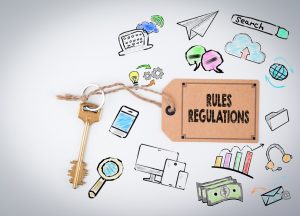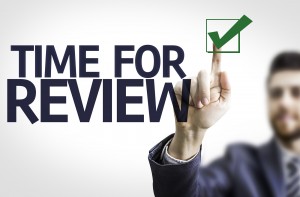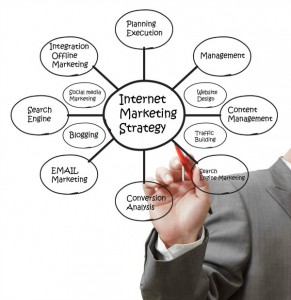Looking at the methods used to personalize, how efficiently they are performed and how they are improved over time is part of measuring ROI.
This is the third of a three-part series on the ROI of personalization. You can read the first part (audience measurements) here and the second part (content measurements) here.
After examining how audiences and content are measured in terms of personalized experiences, let’s discuss how brands should approach the process that drives personalization.
Process measurements require looking at the methods used to personalize, how efficiently they are performed and how they are improved over time.
In this article, we will:
- Cover three aspects of operationalizing personalization.
- Do a reality check for those brands that want to go all in on 1:1 omnichannel experiences.
- Explore the viability of doing this and the cost of not doing it.
Great personalized experiences require alignment across teams
Organizations that are misaligned and have disconnected internal operations will have difficulty providing seamlessly personalized experiences externally to their customers. Let’s look at a few ways this plays out in the real world:
- Siloed marketing teams, where the “ecommerce team” doesn’t regularly interface with the “email marketing team.”
- Siloed departments, where marketing, data and engineering all might as well exist on different planets.
- Siloed product teams where widget A is marketed and supported in a completely different manner than widget B.
To make it even more challenging, some organizations have all of the above. This doesn’t mean you can’t start with some low-hanging fruit. Focus on building bridges where there are the most commonalities and potential benefits.
For instance, if the processes to create mobile app content and email campaigns often overlap, start there. Sure, it won’t provide omnichannel personalization overnight, but you can build consistency and, more importantly, a case for why more coordination and collaboration are needed within the organization.
Breaking down silos and having greater coordination inside your organization is a key step toward creating more holistic and valuable personalized customer experiences.
Testing against hypotheses eliminates anecdotal noise
Most marketers have an opinion about how effective personalized experiences are in influencing engagement and conversions. The challenge is that many of these opinions are anecdotal and what I would call less than scientific.
To counter this, we need to run true tests, which include:
- A hypothesis (what our assumption is).
- A null hypothesis (what must be rejected first to determine that the hypothesis can be true).
- A threshold of statistical significance that justifies further testing and/or investment in the efforts.
In other words, welcome back to Statistics 101.
The best way to determine the effectiveness of your personalization in this way is to do a true A/B test, where the “A” variant provides all users with a generic message/offer/experience and the “B” variant personalizes it. With statistically significant data, you will be able to see if your efforts to personalize
I also recommend that you examine this in a few dimensions. Personalization can be more subtle or more extreme. The cost to deliver — whether that is actual hard costs or time and resources — can vary depending on how extensive that component needs to be personalized. For instance, creating an endless variety of customer imagery can be resource-intensive, while doing database lookups can have a minimal cost once the initial rules are set.
Regardless of how extensively you approach personalization, creating a culture of testing and validation ensures you focus on the right things, cutting through the clutter and anecdotal noise that holds teams back from greater success.
Feedback loops and continuous improvement
Of course, even rigorous testing is only as good as the process used to incorporate the findings of those tests back into the workstream. This requires a commitment to consistently find ways to enhance and optimize personalization efforts. Two big pieces are a feedback loop and governance over the process.
First, you must create a feedback loop that takes your learnings from your efforts (including your tests) and ensures the people and platforms that rely on them are connected.
I’ve worked with organizations that were great at measuring and creating in-depth reports of exactly what happened, where and to whom — but had no meaningful way to translate those results into any changes or actions for the next time they needed to do something.
They had a beautiful library of charts and reports. Yet, their efforts never improved, other than by anecdotal sharing of what made it into reports and what must have been lucky guesses.
Additionally, you need a set of processes to ensure you can change and adapt by incorporating feedback while also not changing too much too quickly. This prevents internal teams — and your customers — from getting confused or frustrated by too much of a well-intentioned thing.
This is where a governance model for your personalized customer experiences will play a role. Remember, it’s not always about moving quickly. Instead, a good governance model:
- Has transparency and consistency.
- Moves at the right speed to allow you to adjust your personalization efforts.
- Avoids too much change that might overwhelm your teams or provide inconsistency to a customer’s experience.
Feedback loops and governance models standardize and systematize your ability to continuously improve the customer experience and, consequently, the ROI that personalization efforts can deliver.
Can lagging organizations catch up to the leaders?
Some of you may be reading this and thinking that all of this sounds amazing, yet it’s simply not possible in a short timeframe. The leaders in personalized experiences aren’t pausing for the laggards to keep up.
Large brands may struggle with departmental or product silos. Smaller ones may struggle with the resources and infrastructure required to do all of this well. Setting up the systems and platforms that support personalized customer experience takes investments.
The hard truth is that, despite the challenges, it is imperative for companies that have fallen behind to catch up. Each day that goes by, the gap between the laggards and the leaders continues to expand. The processes, platforms and knowledge from testing — and even missteps — that the leaders gained will only grow more valuable.
In other words, choosing whether to offer more personalization or not isn’t what you should be considering. Instead, it is how you will bridge the gap between you and the competition, all while maintaining profitability and not disrupting either internal (employee teams) or external (customers and partners) audiences.
An iterative, incremental approach is the best and really the only way to do this. A strong prioritization model can help you understand which initiatives will have the biggest impact on the business and your customers while having the most minimal impact on resources.
Measuring the ROI of personalization
Getting a true return on investment from creating and delivering personalized customer experiences requires a holistic view across audiences, content and channels and the processes used to create, manage and continuously improve all of the above.
The post The ROI of personalized experiences: Process measurements appeared first on MarTech.
MarTech(12)








